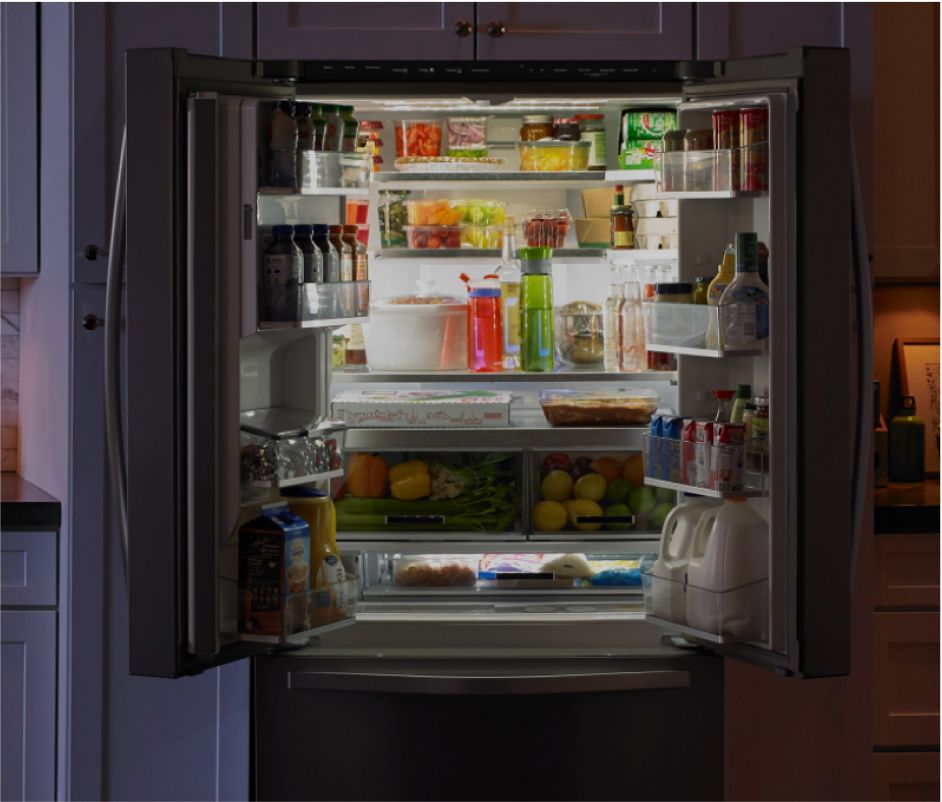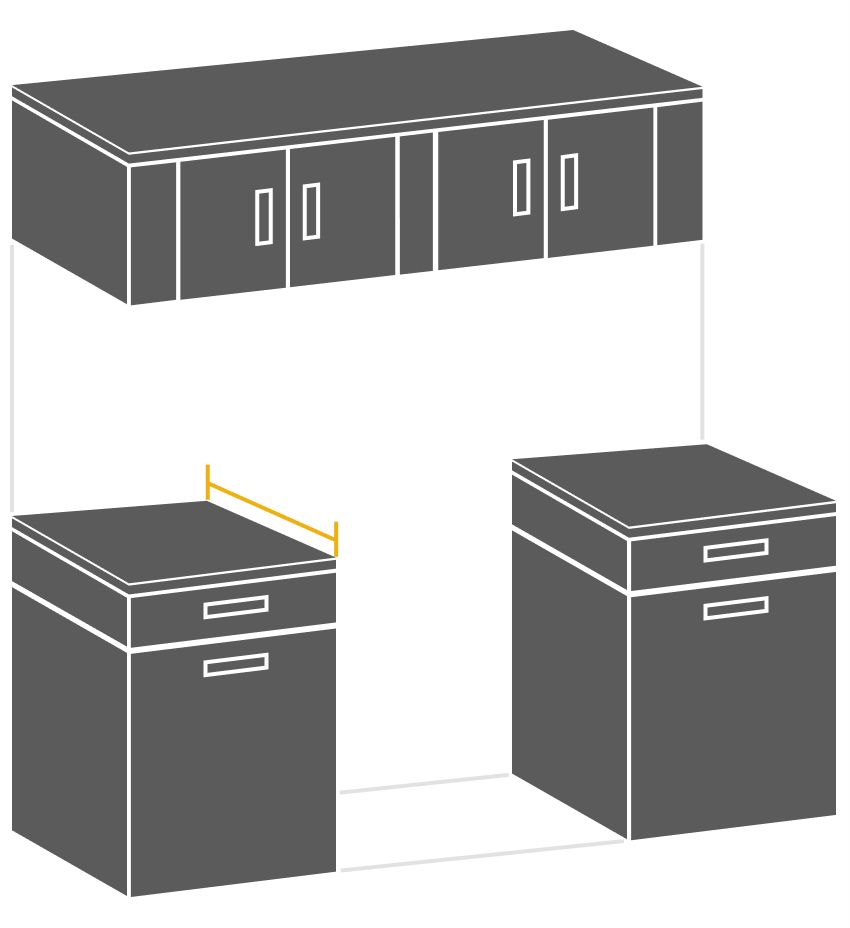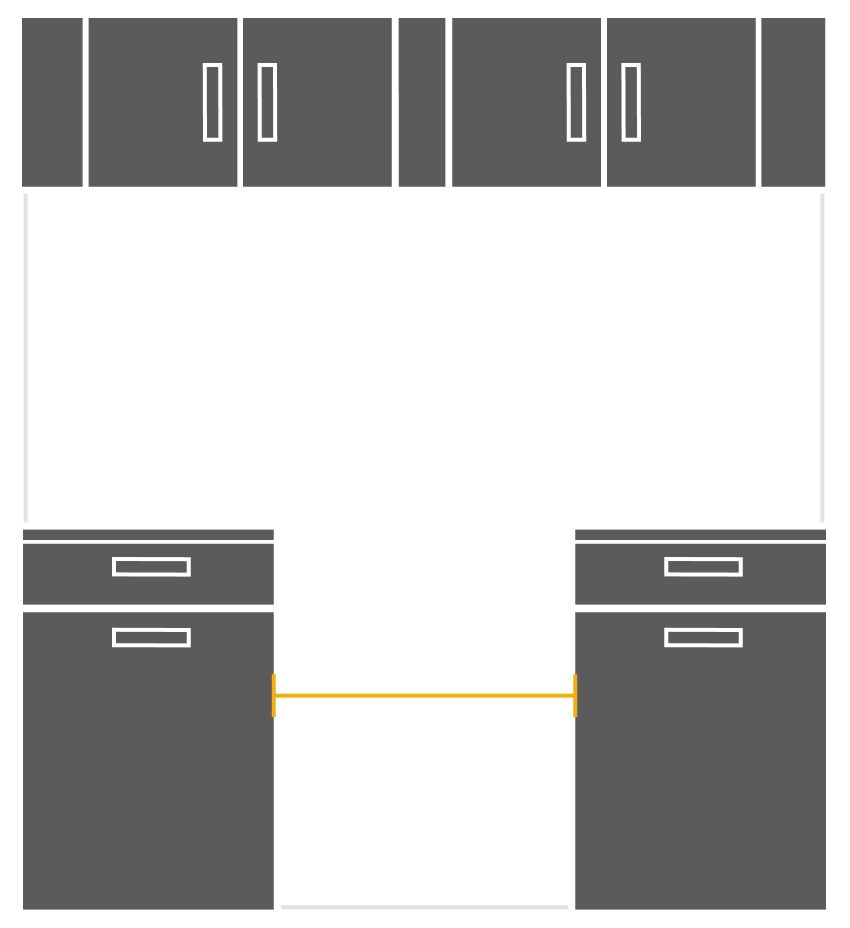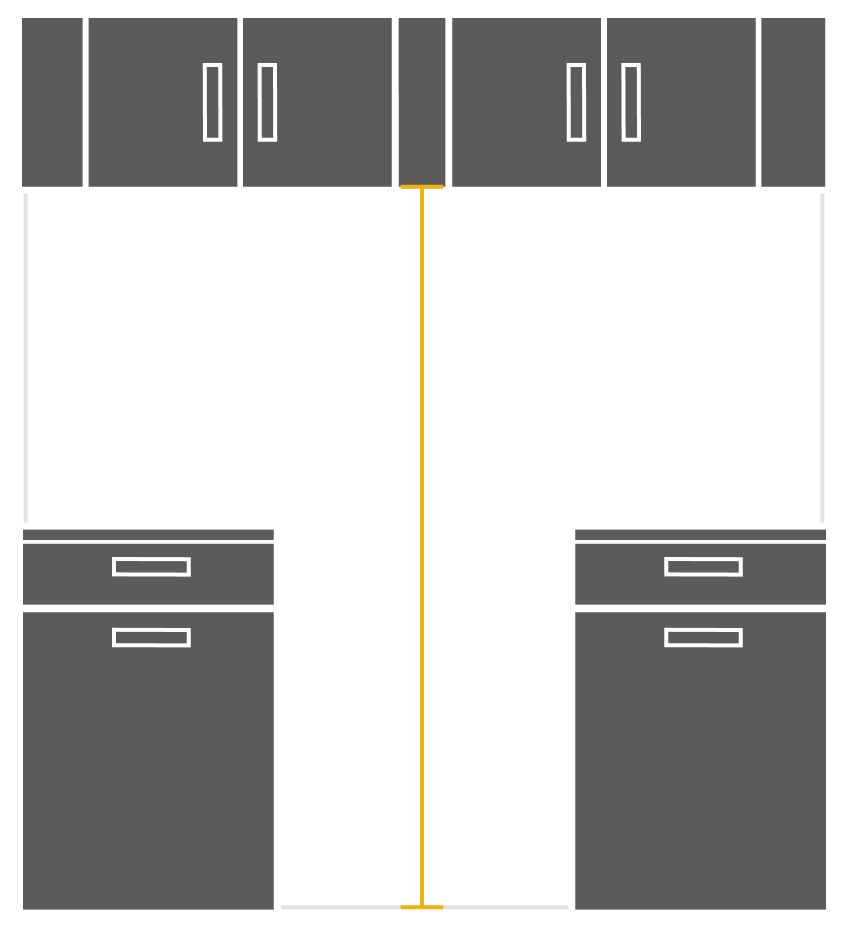A counter-depth refrigerator is around 24–25 inches deep, about 9–10 inches less than a standard fridge. This is about the same depth as most kitchen counters, which means a counter-depth fridge will sit virtually flush with countertops, allowing you to create a seamless, built-in look with your cabinets.
Is a counter-depth refrigerator right for you and your family? Learn everything you need to know about counter-depth fridges, including how to measure your kitchen for one.
What does counter-depth mean?
“Counter-depth” is the distance between your kitchen wall or backsplash and the front of your countertops, which is typically 24–25 inches. A counter-depth appliance is designed to match the depth of countertops, so that the front of the appliance aligns with the edge of the countertop.
Counter-depth vs. standard depth refrigerator
Counter-depth refrigerators are about 24–25 inches deep, approximately the same depth as kitchen counters. While counter-depth fridges are virtually flush with counters and cabinets, standard-depth refrigerators are typically 30–36 inches deep and can stick out half a foot or more past countertops.
Although depth is the main difference between counter-depth vs. standard sized refrigerators, countertop-depth fridges can also be a few inches wider or taller than regular refrigerators. This extra width or height can help make up for loss of depth and offer a similar capacity as a regular refrigerator but with a lower profile.
Learn more: How big is a large capacity refrigerator?

What are the benefits of a counter-depth refrigerator?
- Reduced open depth: This shallow depth refrigerator style will give you more room to open the refrigerator doors without bumping into islands or other kitchen items.
- More aisle space: Counter-depth fridges give you a few more inches of space in front so it may be easier to move around the kitchen, even with multiple cooks—or kids or pets under foot.
- Low profile refrigerator, same capacity: You don’t have to sacrifice space for style. Since most counter-depth refrigerators are a little wider/taller vs standard refrigerators, they offer the same amount of usable space.
- Seamless integration: Refrigerators flush with cabinets provide a sleek, seamless style ideal for modern kitchens.
- Many styles: Like standard-depth, counter-depth refrigerators come in all types: French door, side-by-side, top-freezer and bottom-freezer.
Learn more: What types of refrigerators are best for your kitchen?
How to measure for a counter-depth refrigerator
Are you ready to take advantage of the benefits of a counter-depth fridge? First, you’ll need to measure your kitchen space carefully to find a model with the best fit. Grab your tape measure and follow the tips below to get accurate measurements for your new counter-depth fridge.

Step 1: Measure the depth of your countertops
Start at the wall (not the backsplash) and measure to the edge of your countertop. Your counter-depth measurement should be about 24–25 inches. Ensure an inch of space between the back of the fridge and the wall for proper fridge ventilation.
While shopping, review all of the depth measurements provided for counter-depth models, including depth with doors and drawers open. If you have a kitchen island, make sure that the refrigerator doors and drawers can open without hitting any obstacles.

Step 2: Measure the width of your cabinet cutout
Start by measuring the width of your cabinet cutout at its narrowest point. Then, subtract an inch from your width measurement to allow for a half-inch of space on each side of the fridge for proper ventilation.
If one side of your refrigerator will be next to a wall, leave 2½ inches between the wall and the hinge side of the door so it can swing open.
If you currently have a standard-depth fridge, you can expect your new counter-depth fridge to be a bit wider. Counter-depth refrigerators are typically wider than traditional fridges in order to compensate for their narrower depth.

Step 3: Measure the height from your floor to upper cabinets
Start by measuring from the floor to the bottom of any cabinets that will be above the fridge. Then, subtract a half-inch from your measurement to ensure proper ventilation for the fridge.
Counter-depth fridges are often a little taller than standard-depth models in order to provide a similar capacity. For more information on refrigerator sizes and dimensions, check out our refrigerator sizes guide.
Once you have accurate width, height and depth measurements, you’re ready to find a counter-depth refrigerator with the best fit for your kitchen and the right features for your family.
[“source=whirlpool”]
